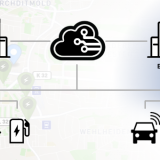Serverless architectures are an upcoming solution for the development of modern applications. Their promises of scalability, flexibility and cost efficiency are driving this development. But how exactly do these architectures work? In this blog post, I would like to take a look at serverless architectures based on the presentation “Cloud eXtreme: Serverless Architecture” by Lars Röwekamp, which was held at this year’s JavaLand conference. The goal is to understand why serverless is an interesting option and which best practices are crucial when designing and implementing it.
Why serverless? The decision to go serverless has a number of advantages. By abstracting from servers, developers can focus entirely on developing their code without having to worry about the underlying infrastructure. This enables a faster time to market while significantly reducing operating costs. The elasticity of serverless architectures allows applications to respond automatically to changing load requirements, ensuring optimal resource utilization.

Architecture patterns and best practices: When designing serverless systems, it is important to consider best practices and architectural patterns to ensure a robust and scalable architecture. A crucial pattern is the single responsibility principle, which states that each function should have a clear responsibility to ensure high cohesion and low coupling. In addition, it is important to avoid waiting times in lambda functions, as these can affect the performance of the application. The principle of Least Privilege Access Control should be applied to ensure security by assigning only the minimum necessary permissions to each function. Optimizing Cold Starts and Concurrency is also essential to maximize application performance and minimize costs.
Implementation scenarios: Serverless can be used in a variety of scenarios, including classic backend applications, mobile and web applications as well as microservices. The flexibility of serverless allows developers to scale their applications as needed and utilize resources efficiently. By using serverless services such as AWS Lambda, Azure Functions or Google Cloud Functions, developers can quickly and easily deploy scalable applications without having to worry about the underlying infrastructure.
Serverless functions: Serverless functions are considered to be the highest evolutionary stage of a serverless architecture and will be examined in more detail in this article. In this scenario, the core task of the programmer is the development of the business logic paired with the bundling of the required libraries. The serverless environment executes the function when called in the appropriate runtime and ensures scaling. However, various configuration tasks are necessary in everyday practice to ensure that the functions run smoothly.
Der Ablauf des Entwicklungsprozesses einer Serverless Function sieht immer so aus, das implementiert, dann gebundled, auf die Plattform hochgeladen und bei Bedarf gestartet wird. Wichtig ist hier das nach dem Upload die Funktion nicht deployt wird, sondern so lange einfach als Datei herumliegt bis sie aktiv angefragt wird. Das ganze Modell ist somit Eventgetrieben. Ein Aufruf der Function kann dabei wahlweise über ein API Gateway, eine weitere Function, oder andere Cloudplattformkomponenten erfolgen.As serverless functions are always platform-dependent, there are a few things to bear in mind. When implementing a serverless function, interfaces of the various platform APIs are usually implemented. In order to be able to test your own code locally, it is extremely important to separate the platform code from the actual business logic. This means that no code that is to be tested should be executed in the function handlers.
Bei der Entwicklung von Serverless Functions ist es entscheidend, bewährte Muster und Best Practices anzuwenden, um eine effiziente und skalierbare Lösung zu gewährleisten, die so günstig wie möglich laufen kann.- Event-Driven Design: Serverless functions should typically be triggered in response to events, such as the upload of a file to a storage service or the occurrence of a timing event. By using an event-driven approach, developers can create reactive and scalable applications that can respond to real-time events.
- Least privilege: This principle states that serverless functions should only receive the minimum authorizations they need to perform their task. By limiting permissions, security risks can be minimized and the application’s attack surface reduced.
- Stateless: Ideally, serverless functions should be stateless, which means that they should not save any internal statuses between calls. By maintaining statelessness, serverless functions can be scaled more easily and execution can be distributed.
- Observability: To ensure the performance and reliability of serverless functions, it is important to implement a comprehensive observability toolset. This includes collecting metrics, logs and traces to gain insight into the behavior of the functions and quickly diagnose problems.
- Bridging: In complex application landscapes, it is often necessary to connect different services and systems with each other. Serverless functions can act as bridges that process and transform data and events between different services.
- Event Pipes: Event Pipes are a pattern where Serverless Functions are used to route events from one service to another. By implementing event pipes, developers can create complex workflow and integration logic consisting of a series of serverless functions.
- Request/Response: Although serverless functions often work in response to events, there are also scenarios where they can serve as endpoints for requests and responses. In such cases, it is important to follow established patterns such as adding return values and error handling to ensure a reliable user experience.
By applying these patterns, developers can create robust and scalable serverless functions that meet the needs of their application while accelerating development and reducing operational costs.
Decision criteria: The decision to use serverless should be made carefully and based on the specific requirements and goals of the project. It is important to carefully weigh the pros and cons of serverless and ensure that it is the best solution for the given scenario. Factors such as performance, scalability, security, cost and complexity should be considered when making a decision.
Conclusion: Serverless architectures offer an efficient and scalable way to develop modern applications. By allowing developers to focus entirely on developing their code without having to worry about the underlying infrastructure, they promise faster time to market and lower operating costs. By applying best practices and architectural patterns, developers can create robust and scalable serverless systems that meet the needs of their project.










